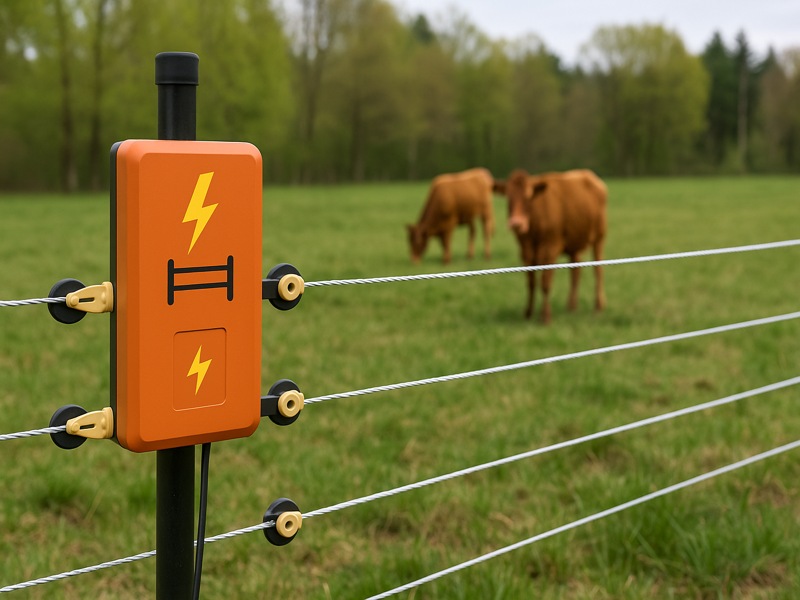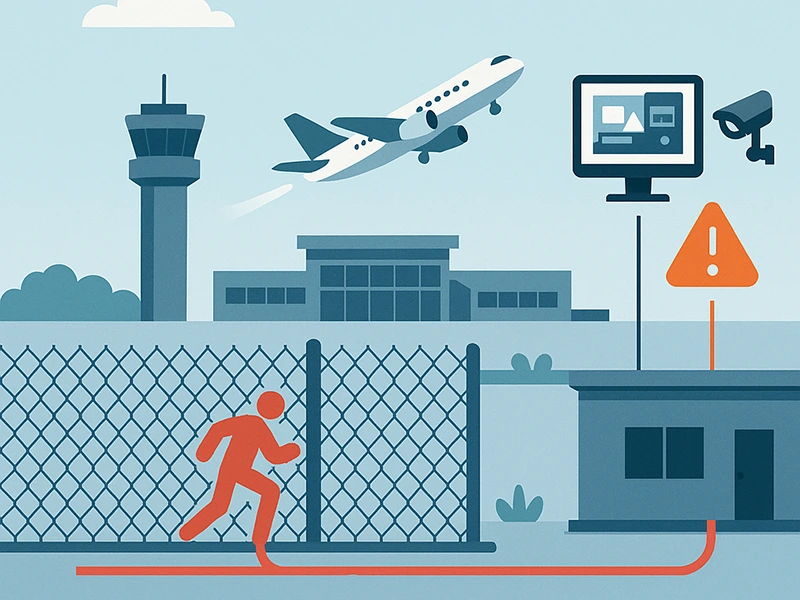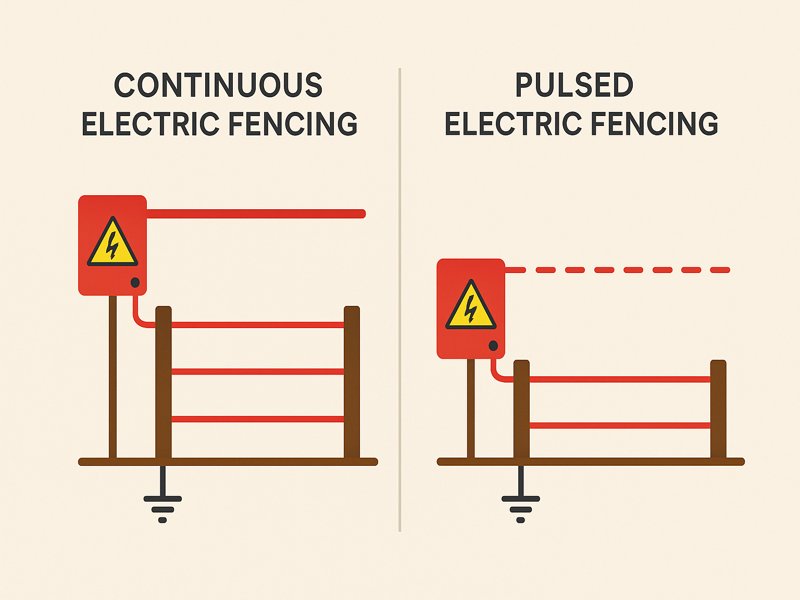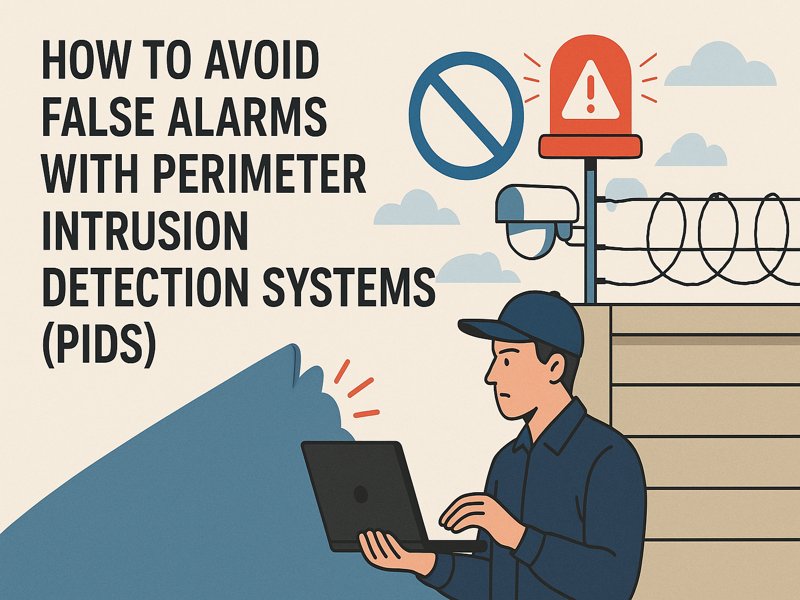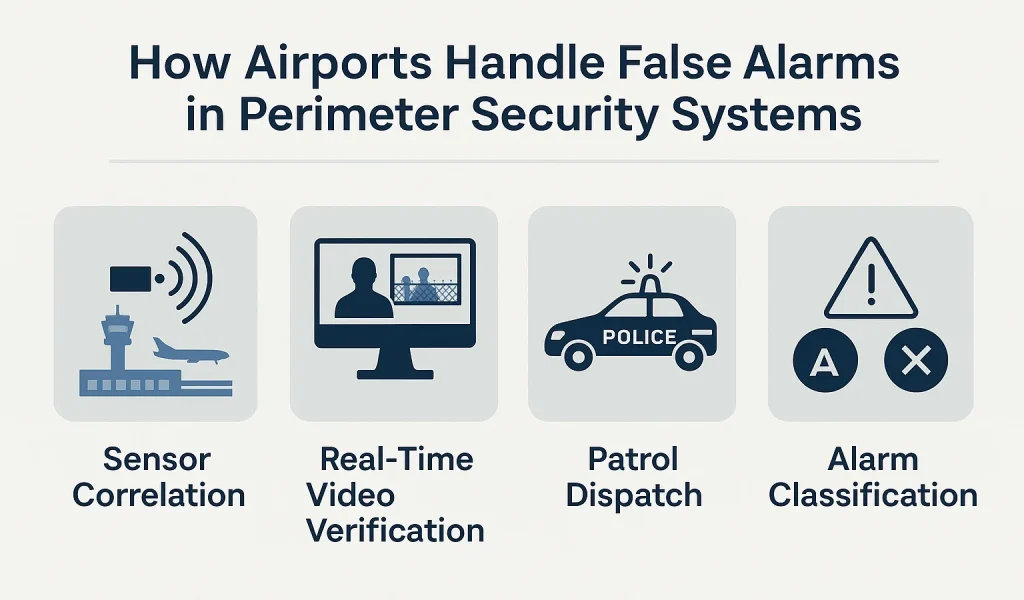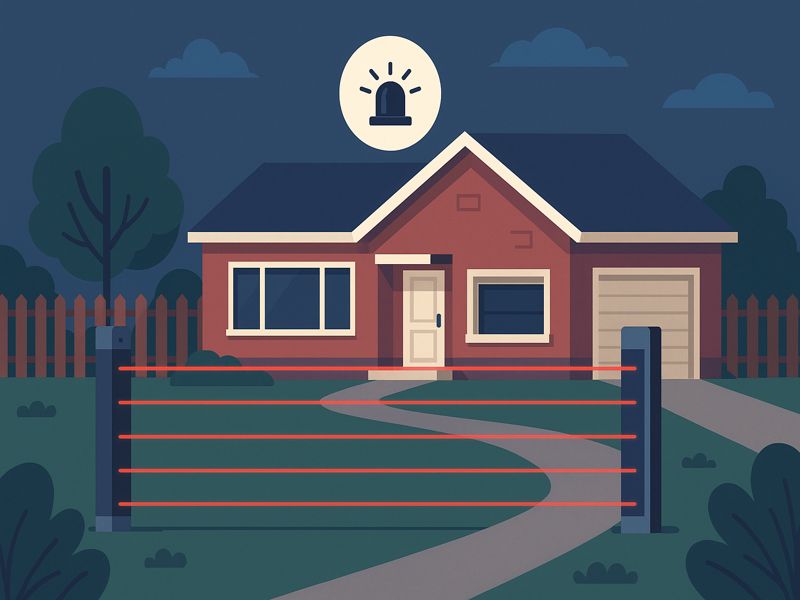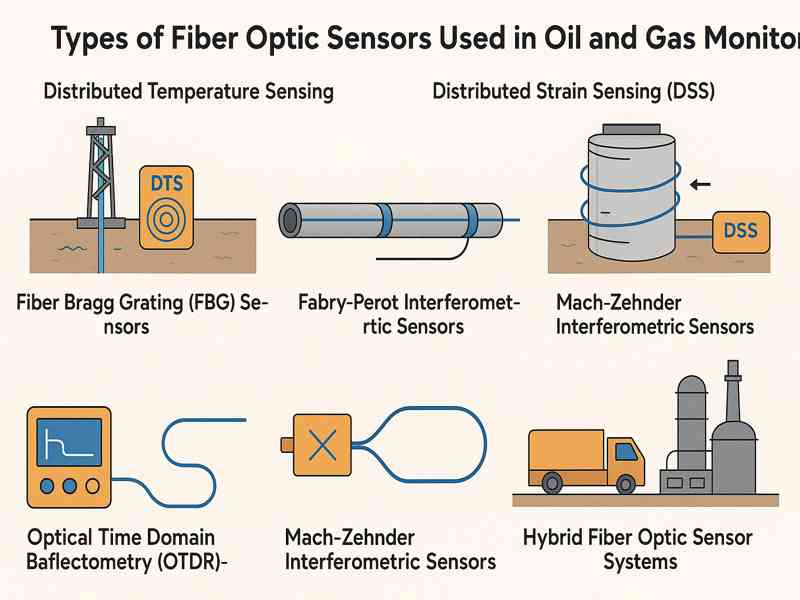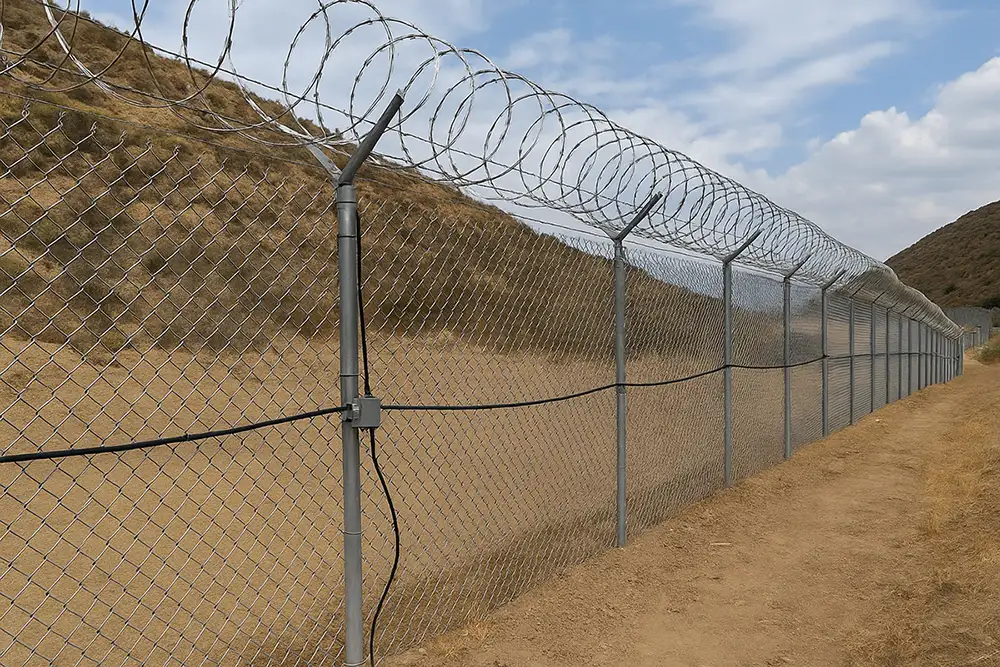Modern farms use fencing to protect and contain livestock. Pulse electric fences offer an efficient, low-maintenance alternative to traditional methods. This article covers how they work, their benefits, and tips for effective farm use.
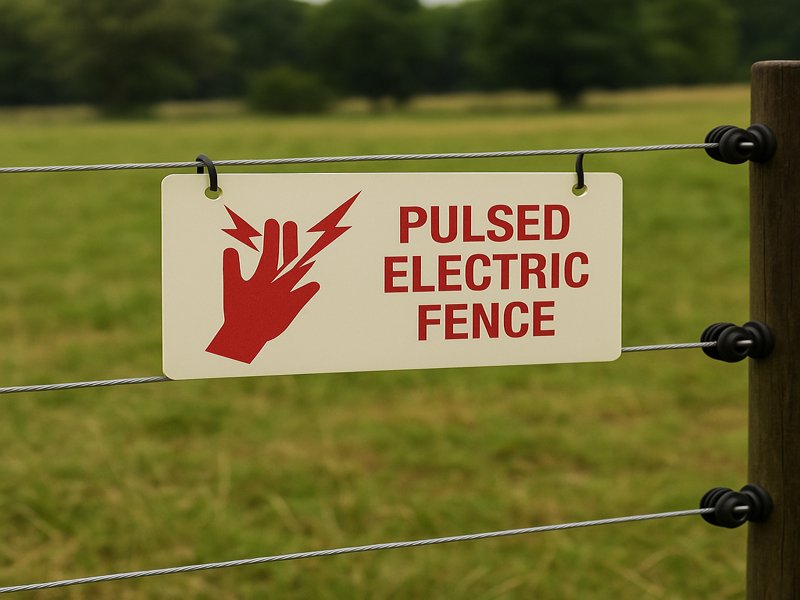
What Is Pulse Electric Fencing?
Pulse electric fencing is a system that delivers brief, high-voltage electrical pulses at regular intervals through a conductive fence wire. When an animal—or predator—touches the fence, it receives a sharp but safe shock, which acts as a psychological deterrent.
Unlike continuous current systems, pulse fences deliver energy in short bursts, usually one pulse per second. This allows animals time to retreat after contact, reducing injury risk while effectively teaching them to respect the boundary.
A standard pulse electric fencing system consists of:
- Power is transformed into high-voltage pulses by the energizer (fence charger).
- Conductive Wire (or tape/rope): Carries the electric charge.
- Using insulators can stop electricity from escaping through posts.
- Grounding System: Ensures current flow through the earth to complete the circuit.
- Posts and Accessories: Provide structure and support for the wire.
Why Use Pulse Electric Fencing on Farms?
Farms are dynamic environments. Animals move freely, predators roam, and terrain varies widely. Pulse electric fencing offers several unique advantages over traditional fencing methods:
Livestock Containment
Electric fencing provides a reliable method to keep livestock—whether cattle, sheep, goats, or horses—within their designated areas. Once trained, animals rarely challenge an electric fence again.
- Cattle: Respect electric fences quickly due to their thick hide.
- Goats: Notorious escape artists, but respond well to properly configured fences.
- Horses: Require visible fencing, often achieved using electric tape.
Predator Deterrence
Pulse fencing is highly effective against common predators like coyotes, wolves, foxes, raccoons, and stray dogs. A predator trying to enter the enclosure receives a painful shock and learns to avoid the boundary.
For poultry farms or lambing pens, installing electric mesh or low wires close to the ground can stop burrowing or crawling predators.
Cost-Effective Solution
Compared to building physical fences with wooden boards or heavy-duty steel, electric fencing is more affordable in both materials and labor. It also requires fewer posts and less upkeep.
Flexible and Easy to Install
Hills, woodlands, and marshes are just a few of the diverse terrains on which electric fences can be built. They’re also modular, allowing you to expand or rearrange paddocks with minimal effort.
Low Maintenance
Once installed and properly grounded, an electric fence requires minimal upkeep. Occasional weed trimming and voltage checks help maintain its effectiveness.
How Does It Operate? The Shock’s Scientific Basis
When the energizer sends a pulse down the fence wire, it waits for something conductive—like an animal’s body—to touch the wire and complete the circuit. For the circuit to be completed:
- The animal must be in contact with the ground (earth).
- The energizer must be well-grounded.
- The fence wire must remain uninterrupted and insulated.
After coming into contact with the animal, the electrical current travels through it, into the ground, and back to the grounding rod of the energizer. This completes the circuit and delivers a quick, high-voltage pulse.
The energy level of the shock is measured in joules, with higher joule ratings capable of powering longer fences and dealing with vegetation loads.
Key Components of a Pulse Electric Fence System
Energizer (Fence Charger)
This is the heart of your system. It can be powered by:
- AC power (plug-in units) – ideal for permanent installations near outlets.
- DC (battery-powered units) – suitable for remote locations.
- Solar-powered units – eco-friendly, ideal for off-grid use.
Choose an energizer based on the total length of the fence and the type of animal you’re containing or deterring.
Fence Wire
Common types include:
- Steel wire – best for durability and conductivity.
- Polywire – lightweight and visible, but less conductive.
- Polytape – wide, highly visible, ideal for horses.
- Polyrope – more durable than polywire and better for longer distances.
Insulators
Keep wires from touching wooden or metal posts and prevent grounding. Insulators come in a range of types for corners, line posts, and gates.
Grounding System
Essential for performance. Typically consists of 3+ galvanized rods driven deep into moist soil. Poor grounding results in weak shocks and ineffective fencing.
Fence Tester
Helps monitor voltage along the fence and quickly diagnose any problems, such as vegetation shorts or broken wires.
Design Considerations for Farms
Every farm is different. Designing an effective pulse electric fence depends on the species of animal, the type of predators, and the terrain. Here are some best practices:
Determine the Number of Wire Strands
- Cattle: 1–2 strands (one at chest height).
- Goats/Sheep: 4–5 strands (closely spaced to prevent slipping through).
- Horses: 2–3 strands, with polytape for visibility.
- Poultry/Pigs: Low wires or electrified mesh close to the ground.
Proper Post Spacing
Posts should be spaced 10–30 feet apart, depending on terrain and wire tension. Use sturdy corner posts with bracing, and lighter posts for line sections.
Control Vegetation
Weeds and grass can cause energy leaks by grounding the current. Regular mowing or herbicide use beneath the fence line keeps voltage high and shocks effective.
Combine Rotational Grazing
For rotational grazing systems, pulse electric fence is ideal. Use portable posts and reels to move paddocks and maintain pasture health.
Training Animals to Respect the Fence
The psychological impact of the shock is what keeps animals from escaping. To ensure success:
- Introduce animals in a calm setting.
- While you watch them, let them explore the barrier.
- Avoid overcrowding, which can lead to panic and attempts to flee.
Once trained, livestock usually avoid the fence even when the power is off, though keeping it powered ensures predators stay out.
Predator-Proofing With Pulse Electric Fencing
To keep predators out:
- Place the lowest wire at 6 inches or less from the ground.
- Use multi-strand systems with hot wires alternated with grounded wires.
- Surround existing enclosures with an external electric fence at a distance of 3–5 feet.
- For climbing predators, an angled top strand (45 degrees outward) can deter attempts to scale the fence.
Electric mesh fencing is particularly effective for poultry yards or lambing areas.
Safety and Legal Considerations
Pulse electric fences are non-lethal and safe when properly installed. However, always:
- Post warning signs if near public walkways.
- Use lightning diverters to protect energizers.
- Keep electric fencing out of reach of young children and pets.
- Follow local zoning and livestock laws.
Many regions encourage or regulate electric fencing on farms, especially in predator-prone areas.
Real-Life Applications and Success Stories
Cattle Ranches in Texas
Large-scale cattle operations use solar-powered energizers with high-joule output to power miles of fencing. Electric fences reduced loss from wandering cattle and helped streamline pasture rotation.
Goat Farms in Australia
Goats, notorious for escaping, are kept in check using 4-strand high-tensile fencing. Energizers are paired with digital voltage monitors to ensure consistent operation.
Poultry and Predators in the Midwest
A free-range chicken farm experienced predator attacks until it installed electric mesh fencing. With low-set wires and a solar energizer, the farm eliminated nighttime losses entirely.
Maintenance Tips for Reliable Operation
- Inspect the fence weekly for damage or vegetation.
- Test voltage regularly (above 4,000 volts is optimal for livestock).
- Keep connections tight and free of rust or corrosion.
- Maintain battery and solar systems, especially in cloudy weather.
Routine checks ensure your fence remains strong, safe, and effective year-round.
Pulse electric fencing offers reliable, cost-effective livestock control and predator deterrence. With proper setup, it ensures lasting protection and flexibility, making it a smart choice for modern, low-maintenance farming.
